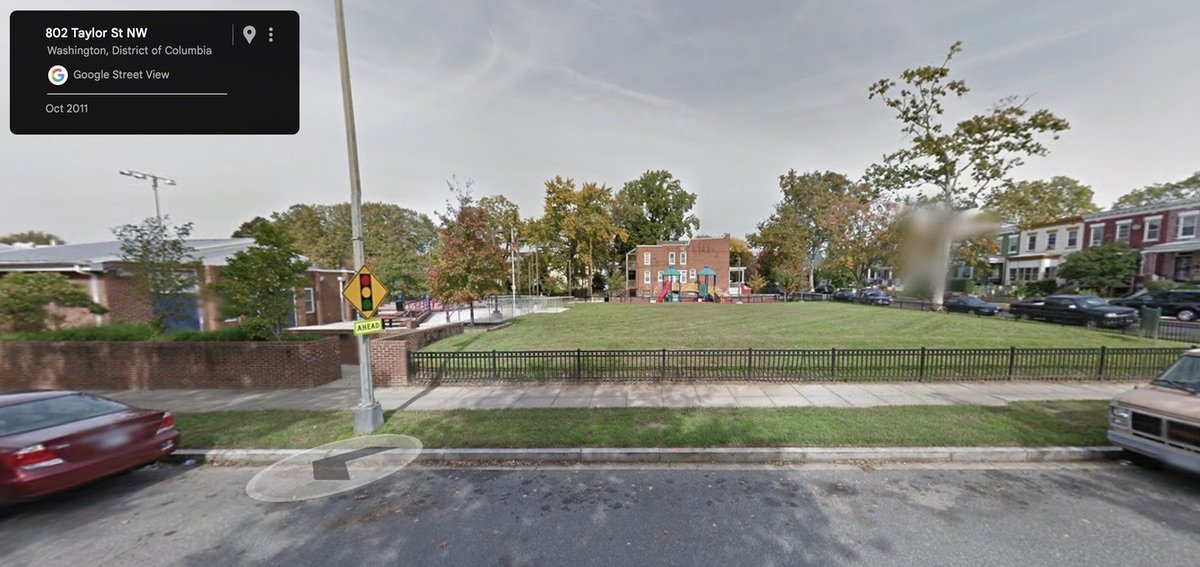The "perm" you didn’t know you needed
/by Galen Lawson
guest contributor & sponsor
Yes, that’s right. It’s time for a makeover. A permeable paver makeover. Bear with me...
DC doesn’t take a backseat to anyone on its pride in diverse and vibrant neighborhoods, celebrating their unique identities and contributions to the city's rich cultural tapestry. We have a community spirit fostered by walkable, natural neighborhoods, all sitting right next to each other. (4th best city in tree coverage! 7th most walkable city!) This proximity means we have a lot of buildings and streets packed into a small area. Concrete and asphalt are part of the fabric of the city. While these materials serve their purpose, they come with a hidden cost, only revealed when the clouds roll in: despite our best efforts, they create a hardened landscape that turns raindrops into runaways.
The issue is whenever rain falls, even from small storms, it bounces off our buildings, roads, sidewalks and parking lots, gathers up momentum and moves along to somewhere it can easily flow, usually into sewers, streams and low-lying areas that fill up way too fast. Along the way, the water picks up nasty little things like oil, salt, metals, pesticides and all manner of chemicals with long, unpronounceable names. In a more natural state, rain would fall directly onto soil and percolate deep into the ground slowly and more evenly while the soil filters out most of the nasty bits. Conversely, an urban rain event is a shock to the system. It happens too fast, and the environment takes a beating.
But there's a growing tide of green infrastructure rising to meet this challenge. You may know about the ubiquitous rain garden, nature’s sponge – essentially a sunken area with water-filtering plants that invite water in and hold it while it soaks into the ground. The city has been utilizing this same sort of method around the neighborhood in the form of bioretention areas that you can see strategically deployed along streets and sidewalks. But there’s another tool at the homeowner’s disposal: the humble and hard-working permeable paver.
Permeable pavers (also called permeable interlocking concrete pavement or PICP) are essentially the same as regular pavers but with little knobby extensions on the sides that maintain a little space in between each brick for water to seep through. Put simply, they mimic the way natural land normally absorbs water. For homeowners, PICP is most useful in the form of patios, walkways and even driveways. And they come in a variety of materials like concrete, brick and recycled plastic. Depending on the material, soil and rainfall, permeable paving can absorb as much as 70% to 80% of annual rainfall right into the ground underneath it.
Abel Rivas of Best Landscaping, who is experienced with PICP installation, says you can be as creative with permeable pavers as you would with standard pavers. “You can cut them into beautiful shapes and mix multiple varieties to create that curb appeal that you’re looking for.”
He even has his favorites: “Techo-Bloc is a pricier option, but the quality is so much better. It’s stronger, salt-resistant and even great to use for a pool deck because it’s cooler to walk on.”
Here are some immediate, tangible benefits that you won’t have to wait a generation for:
Reduced stormwater runoff: smaller amount of runoff that enters storm drains and sewers, mitigating the risk of flooding and erosion.
Improved water quality: pollutants like oil, sediment and fertilizers are trapped and prevented from contaminating waterways.
Groundwater recharge: they help replenish groundwater, important for maintaining healthy ecosystems and providing a reliable source of drinking water.
“Heat island” reduction: unlike traditional pavements that absorb and radiate heat, permeable pavers allow for air circulation and evaporation, resulting in cooler environments.
It looks good! The spaces between permeable pavers can be filled with gravel, grass or other materials, creating attractive landscapes.
They keep puddles from forming on the surface, preventing the formation of breeding conditions for our pesky summertime mosquitoes.
Permeable pavers can add solid surfaces when homeowners have maxed out the allowed amount of hard surface on their property.
Winter Relief: they mitigate the effects of the freeze/thaw cycle from fluctuating temperatures. Melting snow will simply seep through to the soil and not refreeze on top.
There are a few drawbacks to contend with:
Can be 20-30% more expensive due to deeper digging needed to provide space for the stone and gravel needed underneath.
Needs to be monitored for any clogging at the surface. Regular sweeping is recommended.
Must be at least ten feet from a building foundation.
A DC backyard permeable patio by Lawson Yardscapes and Best Landscaping
In addition to the satisfaction of being a good steward of our city land, DC residents may be eligible for a rebate through the RiverSmart Permeable Surface Rebate Program, offered by the District of Columbia Department of Energy & Environment (DOEE) in partnership with the Alliance for the Chesapeake Bay.
There are essentially two kinds of projects it covers:
Replacing impervious surfaces with permeable pavers
Replacing impervious surfaces with vegetation (plants, grass, etc.)
So basically, if you feel like demolishing any existing hard surfaces (asphalt, concrete, brick) on your property, you might be eligible for a rebate. Visit the DC program website to learn more.
Permeable pavers can blend seamlessly into a narrow backyard design
Permeable pavers benefit the environment and offer several practical advantages to resident, making them a worthwhile investment for your property. They’re part of a larger movement towards green infrastructure and offer a range of environmental benefits that contribute to a healthier city environment and more resilient communities.
This IS the perm you’ve been looking for!
About Lawson Yardscapes
Galen Lawson is a local Petworth landscape designer with decades of design experience. Galen sees landscapes as living spaces and canvases bursting with potential, and uses his skills to translate nature and materials into tangible designs that resonate.
Lawson Yardscapes isn't just about planting trees and shrubs, it's about crafting landscapes that sing, create moods, roar with color, solve a problem or build a vision. When you invite me to design your outdoor haven, you're not just getting a landscape designer – you're getting an artist with a kaleidoscope of experience, ready to paint your vision into reality. Contact Galen today for a free consultation!




















